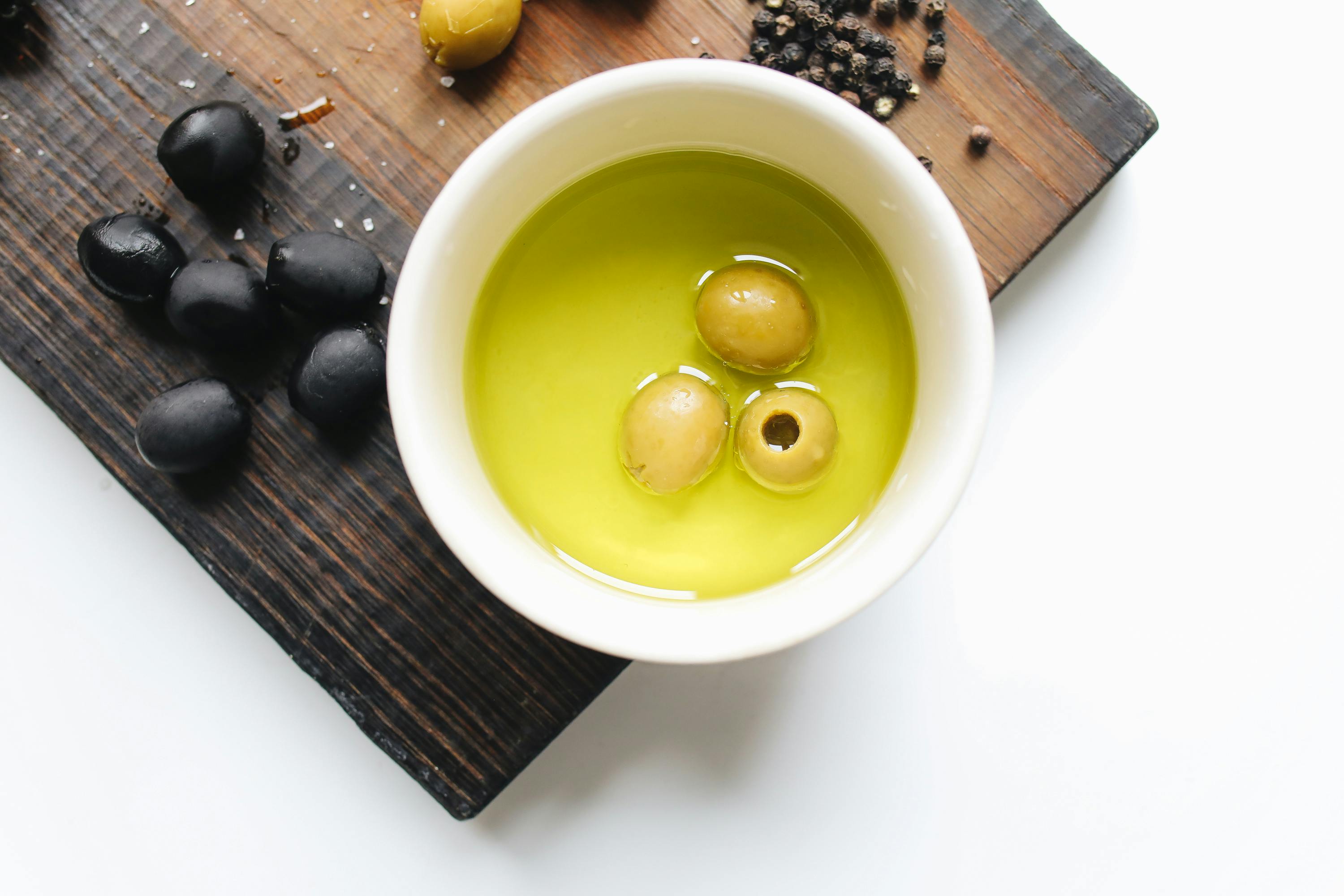What is an Olive?
An olive is a small, round fruit that is typically green or black in color. It is grown on the branches of an olive tree and has been used for centuries for cooking, medicinal purposes, and even as a source of oil. Olives are native to the Mediterranean region and have been cultivated since ancient times. They are a popular ingredient in many dishes, especially salads and pizzas. Olives can also be used to make olive oil, which has numerous health benefits. Olives come in various sizes and shapes, depending on where they are grown and how they are harvested.Olive trees have long been valued for their hardiness and resistance to disease, making them ideal for growing in dry climates with scant rainfall. The fruit of the olive tree is high in monounsaturated fat, vitamins E and K, dietary fiber, minerals such as calcium and iron, as well as antioxidants such as oleuropein. Olives can be eaten fresh or pickled in brine solutions to add flavor to dishes. Olive oil is obtained from olives by pressing them until the oil separates from the pulp. It has many culinary uses and also offers numerous health benefits due to its high concentration of healthy fats.
Botanical Classification of Olives
Olive trees belong to the Oleaceae family of flowering plants and the species Olea europaea. This evergreen tree is native to the Mediterranean region and was one of the earliest domesticated plants. It is a small tree that can grow up to 10–15 meters (33–49 ft) in height and has an average lifespan of 500 years.The olive tree produces fruit known as olives, which are small green or black ovoid drupes that contain a single large seed surrounded by a thin layer of flesh. The fruit is rich in oil and is used for culinary purposes, as well as for medicinal and cosmetic purposes. The leaves of the olive tree are also used for medicinal purposes, such as in teas, tinctures, soaps and aromatherapy oils.Olive trees can be propagated through cuttings or from seed, but most commercial operations use cuttings from mother trees due to their consistency in producing high-quality olives. They thrive best in mild climates with dry summers and wet winters and are very drought tolerant. In ideal conditions, they can bear fruit within 4–7 years after planting.In terms of botanical classification, olives are classified as dicotyledons with two cotyledons (seed leaves). The flowers are bisexual with five joined sepals and five separate petals that are either white or pale pink in color. The ovary is inferior with two carpels that contain two chambers each containing two seeds each.The olive tree has been cultivated since ancient times and has long been associated with peace, wisdom, fertility, health, abundance and good fortune around the world due to its many uses both culinarily and medicinally. Its botanical classification helps us better understand its characteristics so we can continue to cultivate it for its many benefits even today.Nutritional Benefits of Olives
Olives are a small but mighty fruit packed with nutrients that offer a range of health benefits. They are a great source of antioxidants, including vitamin E and polyphenols, which can help protect the body from damage caused by free radicals. Olives are also rich in essential fatty acids, such as oleic acid and linoleic acid, which can help reduce inflammation. Additionally, olives contain fiber and other important minerals, such as iron, magnesium, and calcium.Olives are an excellent source of dietary fat – mostly monounsaturated fat – which can help reduce the risk of heart disease. Monounsaturated fats have been shown to lower LDL (bad) cholesterol levels while increasing HDL (good) cholesterol levels. Additionally, olives may help protect against stroke by reducing inflammation in the arteries that lead to the brain.
The high amount of polyphenols found in olives makes them ideal for promoting good digestive health. These compounds can help reduce the growth of harmful bacteria in the gut and promote the growth of beneficial bacteria which is important for overall health. Furthermore, olives can help improve digestion by increasing bile secretion which helps break down fat molecules more efficiently.
In addition to their nutritional benefits, olives contain several compounds that may provide antioxidant protection and anti-inflammatory effects when consumed regularly. This can help protect against chronic diseases such as cancer and diabetes. Finally, olives also contain oleuropein – an anti-microbial compound – which has been shown to have antibacterial properties that may help fight off infections.
Overall, olives are an incredibly nutritious food that offer numerous health benefits when consumed regularly as part of a balanced diet. They’re a great source of dietary fat and antioxidants that can help protect against chronic diseases while promoting good digestive health. Additionally, their anti-inflammatory effects may provide additional protection against stroke and other cardiovascular diseases too!
How are Olives Used in Cooking?
Olives are a popular ingredient in many types of cuisines, from Mediterranean to Middle Eastern. They can be eaten as a snack, or added to salads, sandwiches, pizzas, and other dishes. Olives can also be used in cooking to add flavor and texture to various dishes.One way olives are used in cooking is as a garnish. Green and black olives can be sliced or chopped and added to the top of a dish for decoration and flavor. They can also be stuffed with feta cheese or almonds for an extra burst of flavor.Olives can also be used as an ingredient in sauces. Kalamata olives are often mashed into a paste and combined with olive oil, garlic, oregano, and other spices to create a delicious topping for pasta dishes or pizzas. Olive tapenade is another popular dish that combines olives with capers and anchovies for an intense flavor experience.Olives are also used to add flavor when roasting vegetables or baking fish. Olives can be added directly to the pan when roasting vegetables like Brussels sprouts or zucchini; their salty-tangy flavor pairs nicely with the sweetness of the vegetables. When baking fish, green olives can be mixed with herbs and lemon juice for an extra flavorful topping that adds both color and taste to the dish.For those looking for an even more creative way to use olives in cooking, they can be pureed into a spread or dip similar to hummus. Olives provide a rich nutty flavor that pairs nicely with other ingredients like tomatoes, onions, garlic, feta cheese, cucumbers, peppers, and more! This spread is perfect on crackers or served with pita chips as an appetizer before dinner.
Are Olives Fruits or Vegetables?
Olives are a type of fruit that is actually the stone of the olive tree. Although olives are categorized as a fruit, they have many characteristics that are similar to vegetables. Olives have a unique flavor and texture, and they can be eaten raw or cooked in different dishes. They are also high in healthy fats and contain vitamins A, E, and K.The majority of olives available for purchase have been cured or processed in some way, such as by being brined or canned. This process changes the flavor of the olives and makes them more suitable for eating. Olives can also be pickled with vinegar or other flavorful liquids to give them a tangy taste.Olives can be used as an ingredient in salads, sauces, pizzas, stews, and other dishes. They can also be eaten as a snack on their own, either plain or stuffed with cheese or other fillings. Olives are often used as garnishes on dishes to add color and flavor to the dish.Overall, olives can be classified as both fruits and vegetables because they possess characteristics of both categories. They may not look like traditional fruits or vegetables but they do offer health benefits that are associated with both types of food.Fruits and Vegetables
Fruits and vegetables are two different types of food that have many similarities, but there are also some important differences. Fruits are typically sweet and contain seeds, while vegetables usually have a savory taste and no seeds. Fruits often have a tough outer skin or rind that must be removed before they can be eaten. Vegetables may have an outer layer as well, but it is usually edible.When it comes to nutrition, fruits tend to contain more sugar than vegetables, and they provide fewer vitamins and minerals. However, fruits are usually good sources of dietary fiber and antioxidants, both of which are important for overall health. On the other hand, vegetables are higher in vitamins, minerals, and protein than fruits; they also tend to be lower in calories.In terms of preparation, fruits can often be eaten raw or cooked if desired. However, most vegetables need to be cooked in order to make them edible. Fruits may also be juiced or blended into smoothies for an easy way to get all the nutrients without having to eat them whole. In contrast, vegetables may require more complex preparation methods such as boiling or steaming before they can be served as part of a meal.Overall, fruits and vegetables both provide essential nutrients for our bodies and should form part of any balanced diet. While there are some key differences between them in terms of nutritional content and preparation methods, the two food groups should still be enjoyed together as part of a healthy diet plan.Is Olive Considered a Fruit if Agave Is Also Categorized This Way?
The culinary classification of plants often leads to interesting debates. For instance, while olives are commonly used in savory dishes, they are botanically classified as fruits. This raises the question, is agave classified as fruit? While agave serves as a sweetener, its classification also aligns with that of fruits.
Why Some People Consider Olives Fruits and Others Consider Them Vegetables?
Olives are a type of fruit that can be eaten in both its raw and processed forms. They are usually considered to be a vegetable by some, while others consider them to be a fruit. This is because olives are technically drupes, which are fruits with a single hard stone inside. However, they do not fit into the traditional definition of what makes a fruit, as they lack sweetness and have an intense savory flavor.The confusion over the categorization of olives arises mainly from the fact that it does not fit into the traditional definitions of either fruits or vegetables. While it is technically a fruit, many people tend to categorize it as a vegetable due to its savory taste and the way it is usually prepared and served. Additionally, olives are often used in salads or as accompaniments to savory dishes such as pizzas or sandwiches, which further adds to its confusion as being labeled either a fruit or vegetable.The confusion surrounding olives also arises from different countries having different classifications for them. For example, in the United States, olives are classified as vegetables while in Italy they are classified as fruits. Similarly, in some parts of Europe, olives are considered to be both fruits and vegetables.In conclusion, whether someone considers olives a fruit or vegetable depends on their personal preference and where they come from. While it is technically classified as a drupe (a type of fruit), many people prefer to categorize it as a vegetable due to its intense savory taste and how it is typically prepared and served.
Conclusion
Olives are fruits of the Oleaceae family that have been cultivated for thousands of years. Despite their classification as a fruit, they are often used and considered to be a vegetable due to their savory flavor and versatility in cooking. Olives are packed with various health benefits, making them an excellent addition to any diet. They can be eaten raw, cured, or canned in brine or oil and used in a variety of dishes. The fruit can also be pressed to make olive oil, one of the healthiest cooking oils available.In conclusion, olives are technically classified as a fruit but are often thought of as a vegetable due to their savory flavor and culinary uses. They provide numerous health benefits and make a tasty addition to many dishes. With all these benefits, it is easy to see why olives have been enjoyed for centuries.



